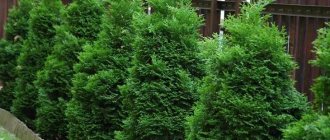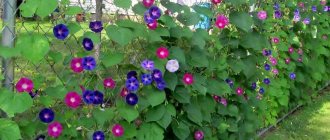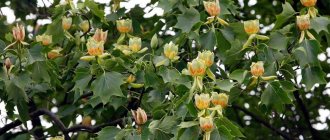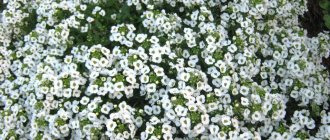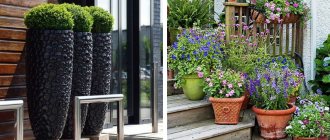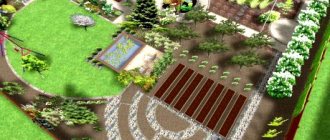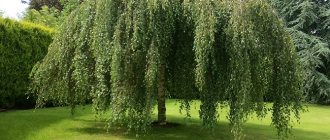A personal plot is a territory that every owner can design according to his tastes and preferences. It doesn’t matter whether you have a large area or just a few acres, any area can be turned into a cozy corner, a wonderful place to relax among beautiful plants, where vines for the garden occupy a special place. The earth is always ready to share its pure energy and beauty with man, energizing, cleansing and refreshing. Lianas will help create cozy corners, secluded places in the garden, and hide an unsightly fence or wall of an outbuilding. A pergola or gazebo, braided with a beautiful flowering vine, will look much more attractive, protect from direct sunlight, inviting you to relax in the shade of green leaves. And a fence decorated with a liana is always beautiful and visible from afar, causing admiration among passers-by and neighbors.
We will talk about vines, which are easy to grow in our climate.
Varieties of vines for the garden
Lianas grow mainly in tropical forests, where, spreading from tree to tree, they form impenetrable thickets. In areas with a temperate climate, they are more often found not in the natural environment, but in the landscape of private and botanical gardens and parks. All vines cultivated in gardens are divided into two groups : perennial plants with woody trunks that overwinter without shelter, and herbaceous plants with thin stems that in most cases die off in the winter.
Woody vines are evergreen , which do not shed their leaves in the cold season, and deciduous . Evergreens rarely have good resistance to sub-zero temperatures, so their list is much shorter than deciduous ones. Some vines are valued for their decorative foliage, which takes on a beautiful shade in the fall, while others are valued for the splendor of their blooms. Some plants produce edible berries (grapes), so they are grown for their fruits.
Annual climbing plants stand out as a special group . They propagate by seeds and are used in landscaping private plots of land along with their perennial relatives.
Existing types and characteristics of lianas
To landscape the garden and harmoniously transform the local area, you can select different types of vines that differ in external characteristics. In addition to ornamental and flowering plants, in modern nurseries and on specialized websites it is easy to select plants, conventionally divided into three main groups:
- creeping. Such plants rise upward exclusively on a pre-arranged support and without its arrangement, their climbing branches will cover the entire area allocated for planting with a green carpet (climbing rose and euonymus);
- climbing. On the stem of climbing vines there are small and quite tenacious suckers; such shoots provide reliable adhesion of the plant to any support with a different rough surface (hydrangea and maiden grapes);
- clinging. Lianas of this species have thin and fairly strong tendrils; they help the plant, during the growth process, to anchor itself on a supporting structure and raise the stem to a certain height (ornamental grapes and ampelopsis).
Climbing vines should be selected based on their characteristics and focus on the created conditions and agricultural technology necessary for their growth.
Before doing landscaping and designing the planting of a vertical carpet, you will have to carefully study all the factors of growth and normal flowering of liana crops.
Using vines in the garden landscape
Since the stems of vines are unstable, their use in landscape design is somewhat limited. They are grown where there is support: near the walls of buildings, near fences, sheds. Pergolas are also specially built to support long lashes.
Pergola for climbing plants
The flexibility of vine-like vines can be used to create a picturesque arch over a gate, porch, or entrance to a gazebo.
Arches with clematis
By constructing a simple canopy from vertical posts and several horizontal crossbars, you can create a green roof instead of a roof. Of course, it will not save you from heavy rain, but it will provide shade on a hot day.
Maiden grapes gazebo
Climbing plants are also used as hedges for zoning a site. Their whips are directed along lattice fences and chain-link mesh to protect the yard or resting place from prying eyes.
Morning glory as a hedge
Another area of use of liana-like plants is the creation of colorful carpets on the soil. The scourges simply float along the ground without support, quickly grow and fill the empty space.
Ivy carpet
Landing location
Climbing vines will be much happier in sunny areas and well-drained soil.
In this case, a mandatory condition will be the presence of support nearby. These can be purchased or self-made arches, fences or walls of garden houses, outbuildings, bathhouses or gazebos.
But when decorating the surface of buildings when planting perennial vines, it is necessary to retreat from the walls by at least half a meter. Firstly, this will make it possible to preserve the foundation from strong roots, and, secondly, it will allow the young sprout to normally move to a new place.
Perennial deciduous vines
This is the most numerous group of all types of vines. Their advantage is unpretentiousness, ease of care, and large annual growth. Under favorable conditions for development, in 2-3 seasons, some deciduous climbing plants are able to completely weave a fence, gazebo or wall of a house. The disadvantage of most of them is their ability to form shoots, which can be difficult to deal with. To control the growth of the root system, it is recommended to fence each plant with a border dug to a depth of 30 cm.
Vineyard aconitifolia
Ampelopsis (vineyard) aconite-leaved, is a vine that reaches a length of 8 m. During one growing season it adds up to 3 m. The advantage is its beautiful, deeply dissected leaves. The vineyard is especially magnificent in the fall, when the foliage takes on a rich golden color.
Small berries hanging in beautiful clusters, resembling multi-colored beads when ripe, are also decorative. The liana is resistant to diseases and pests and tolerates pruning well. For landscaping, it is enough to use 1 plant for every 4 m of fence.
Maiden grapes
The most common in temperate latitudes are five-leaf and attached maiden grapes. It grows quickly, does not react to dusty air, and is almost not damaged by pests and diseases. If you need an unpretentious plant, it is better to opt for the five-leaf subspecies. It grows in almost all types of soil and is tolerant of soil freezing. A striking representative of the five-leaf grape is the variety "Murorum" . It is distinguished by strong foliage of the vine and a more uniform (compared to species-specific maiden grape) surface coverage. In autumn, the foliage takes on a rich red color and a glossy shine.
The advantage of the attached maiden grape is its unique ability to climb a flat vertical plane without the use of support.
The flattened tendrils literally dig into the surface, securely holding the vine under the strongest gusts of wind. But it is worth noting that this type of virgin grapes is demanding on the soil: it must be loose, drained and light. The plant tolerates drought more easily than heavy soil with stagnant moisture.
Clematis vinifolia
An unpretentious liana-like shrub that forms a lush, impenetrable curtain. Grape-leaved clematis (clematis) blooms profusely and for a long time: from late June to August. Numerous white or milky flowers are collected in fluffy inflorescences. Climbing branches do not need tying, since the plant clings to the supports with long leaf petioles.
Clematis vinifolia can grow in open sunny areas, but will show itself in all its glory in light partial shade. Loves moderate watering, well-drained soils. It tolerates gas and dust well, so it is often used as a hedge on the side of a busy road.
Common hop
Hop vines are covered with small thorns, thanks to which the plant quickly climbs nearby supports and forms continuous green walls.
The plant has two disadvantages. Firstly, the constantly growing root system is rapidly occupying new territory. Secondly, the shoots that have grown during the season die off in the winter. Because of this, hops are not suitable for decorating ugly fences and old, unsightly-looking buildings, since in the winter they become bare and look untidy.
Calistegia
Calistegia (or povoy) is a climbing plant that has more than 5 species. Gardeners most often grow hairy and fluffy (terry) calistegia on their plots. Calistegia fence, also known as “birch”, despite the beautiful white and pink flowers, is considered a malicious weed and is difficult to remove from the site.
Calistegia is easy to care for, but loves well-drained, fertile soil. This plant has a deep root system, so young shoots can appear far from the planting site.
| Vine length (m) | Flowering time | Soil type | Peculiarities |
| 0,8-4 | June August | Loose, fertile | Does not tolerate transplants well, does not like excess moisture |
Perennial evergreen vines
Late autumn comes, and all the beauty of deciduous plants disappears - only bare branches remain. This is not the case with evergreen vines; they retain their color all 24 months of the year. Of course, there are not so many of them in comparison with deciduous ones, but they are able to enliven the garden at any time.
Ivy
The most common representative of evergreen vines is common ivy.
A plant dug up in natural conditions easily takes root in a garden plot. Unlike deciduous vines, it grows somewhat more slowly, but is distinguished by good frost resistance and highly decorative leaves. The plant is capable of climbing to great heights using aerial roots. They grow into wood, plaster, brickwork seams, and firmly hold the plant on sheer walls. Under natural conditions, ivy grows in shady forests, so it is advisable to provide the plant with at least diffuse shade in the garden plot.
There are several varieties of ivy, differing in leaf shape and color. Particularly decorative is Colchis ivy, which has variegated foliage. But it is less frost-resistant and grows more slowly than a species plant. In addition, young shoots need a garter.
Important. Colchian ivy should be planted in sunny areas, since the variegation of foliage decreases in the shade.
Akebia
The heat-loving southern liana began to be grown in temperate latitudes not so long ago. In its natural habitat it is a hardy evergreen plant reaching a length of up to 10 m . Akebia is quite frost-resistant, surviving temperatures down to 200 below zero . The disadvantage is that the vine sheds its leaves in harsh weather conditions and develops like an ordinary deciduous plant. The climate, unusual for the southern liana, also affects flowering - it is significantly reduced. Racemose drooping inflorescences have a pleasant chocolate smell, for which the plant received its second name - chocolate vine .
Advice. To make akebia feel more comfortable in the middle regions, it should be grown near a wall on the south side of the house, where it will receive enough sunlight. For the winter, the vine should be covered with construction insulation and sprinkled with a layer of snow on top.
Honeysuckle honeysuckle evergreen
Honeysuckle honeysuckle is a shrub with straight shoots reaching a length of 6 meters . The leaves are small, leathery, dark green, rich in color. The flowers are tubular, collected in racemes of red, yellow or orange (depending on the variety), odorless. Flowering is long-lasting, from late spring to early autumn. The small red berries are also valuable from a decorative point of view.
The species is frost-resistant. Sometimes, at prolonged low temperatures, annual shoots may freeze. But this does not cause irreparable harm to the plant, since after spring pruning it quickly recovers. Honeysuckle prefers to grow on fertile soils and loves sunny places.
Trimming
All vines grow beautifully. And if for annuals there is no crime in this, then for perennials it will be necessary to limit growth by pruning. This will help form a nice crown and provide nearby growing plants with light, warmth and nutrients.
Most often, pruning is carried out in the fall. In some cases, when the vines are very neglected, such an event can be held in early spring.
When pruning, old, damaged, diseased branches are removed. For fruit-bearing vines (grapes, lemongrass), only five or six good shoots are left; all the rest, along with young shoots, are destroyed.
Blooming decorative vines
In cases where you need to create not just a hedge of vines, but a vertical flower arrangement, beautifully flowering climbing plants are used. They are more capricious than hops or virgin grapes, and require more attention. But we should give them their due, because with good care they can form a chic flower garden in a small area.
Hydrangea petiolate (climbing)
This is a type of garden hydrangea that develops not as a shrub, but as a vine. It has dark green leaves and fragrant shield-shaped inflorescences that are white with a pink tint. It grows slowly, but is capable of climbing to a height of up to 25 m and weaving around a fairly large area. Young seedlings need winter shelter, but mature plants with a woody trunk can withstand severe frosts without obvious damage.
Petiolate hydrangea is moisture-loving, but does not tolerate stagnant moisture. Prefers acidic (pH 5.0) soil and easily tolerates light shade, although it develops better in open, sunny areas.
Popular varieties of petiole hydrangea:
- Petiolaris. The tallest variety, forming a lush green mass without gaps;
- Cordifolia. The variety is endowed with large inflorescences, consisting of flowers of different sizes, and has a strong aroma;
- Curly. Abundantly flowering variety with umbrella-shaped wide inflorescences of white color;
- Miranda. The scourge reaches length 10 m, light veins are clearly visible on the dark green leaves.
Kampsis
A beautiful and strong plant with large tubular flowers, collected in clusters of several pieces. The flowers come in red and orange colors, they form from June to August, and during this period the vine is most attractive. But even after flowering, Kampsis is quite decorative thanks to its large odd-pinnate leaves with a serrated edge.
Common hop
A plant that also has a wonderful aroma and can grow anywhere: in the eternal shade, and on the poorest soil. But excess light can harm it - cause wilting, provoke various diseases.
Leaves and cones can be added to tea and other drinks, and they are also used in folk medicine.
It covers the surface with a thick carpet, so it is suitable for creating green fences that reliably hide the area from prying eyes. Stem length - up to 7 m.
If the soil on which it is planted is fertile and rich in nutrients, then if the gardener is careless, hops can take over the entire garden, reach the flower beds and beds, displacing all other plants.
Annual liana-like plants
Annual climbing plants that bloom all summer are used to create bright floral arrangements. just 2-3 weeks they entwine supports up to 3 meters . A striking representative of the bindweed is morning glory.
Multi-colored “gramophone” flowers bloom every day from June to September . The morning glory stem finds support on its own and wraps itself around it. If you need to plant a wall or a solid fence, vertical strings are stretched, along which the plant can easily climb up.
Dolichos purpurea (hyacinth beans) is of interest for creating landscape scenes. The irregularly shaped flowers are collected in large, showy inflorescences and have a rich, persistent aroma. Flowering lasts from May to September , and in warm autumns until October. Starting in August, no less attractive purple pods with beans appear on the vine, hanging in large clusters.
The lashes of decorative beans grow up to 3 m in length per season. The flowers flash against the background of green foliage like fiery red lanterns throughout the summer. The plant tolerates shaded areas well, which is not typical for most annual vines.
If you need to decorate a low hedge, you can use sweet peas. It clings to the fence with long curling tendrils, blooms almost continuously, and fills the garden with a pleasant aroma that evokes nostalgia for childhood.
Advice. Perennial vines may need time to take root and acclimatize immediately after planting. While they are growing shoots, it is recommended to plant annual vines next to them. They will make up for the temporary lack of green mass of their woody relatives.
Classification of annuals
This type includes:
- Echinocystis, popularly called “mad cucumber” and until recently considered a weed;
- sweet pea, a bindweed from the legume family with an attractive scent and bright colors;
- Basella alba, or Malabar spinach, which has medicinal properties and is eaten in southeast Asia;
- dolichos, a vine from the legume family, reaching 3 meters in length, characterized by rapid growth, unpretentiousness and decorativeness;
- climbing kobeya with bell-shaped flowers;
- nasturtium with large fragrant flowers of bright orange color and rounded leaves;
- quamoclite, an unpretentious annual from which Christmas tree figures are formed;
- rough ellipse, beautifully blooming with bright buds from mid-summer to the end of the autumn season;
- azarina, or maurandia, which blooms for several months;
- thunbergia with heart-shaped leaves and large 5-centimeter flowers in snow-white, beige and other colors with a dark center.
Many flowering vines for the garden in their homeland, in the tropics, grow for more than one year, but in our climate, gardeners plant them as annuals.
Sweet pea
Liana is unpretentious. Low-growing varieties are used to decorate beds, while tall varieties are used to create vertical compositions.
It is distinguished by fragrant flowers, for which it acquired its name. Ornamental plants are planted in the ground in mid-spring; you can use seedlings, so the vine will grow faster.
Schisandra
Another useful ornamental plant. Its fruits are used for medicinal purposes, made into preparations or simply frozen. You can also use leaves, branches, and roots of lemongrass.
Liana prefers sun and abundant watering. It is necessary to monitor the vertical growth of the lashes, since in this case pollination will occur much better.
It is recommended to cover lemongrass for the winter.
Clematis
Clematis will create a bright, beautiful flower bed in any area. This is achieved thanks to the large number of large flowers that bloom on each shoot of the vine. Thus, when purchasing a clematis plant, you can plan color transitions in advance and create beautiful flowering compositions using clematis.
For proper weaving of clematis vine shoots, a fabric mesh installed in a light area is best suited. Be sure to cover the roots of clematis for the winter and dig up the soil around it, because the plant is not frost-resistant.
Passionflower
The plant is often called passionflower or granadilla. The plant came to us from South America and is distinguished by interesting unusual flowers. Passionflower loves light and moisture.
Wild grapes
An interesting example of a plant for quickly creating shade or a living wall up to several meters high is wild grapes. Its flowers do not have a distinct flowering season; it will be an ideal background for other beautiful flowering plants.
Wild grapes are easy to care for, as the name implies, they grow quickly, and their leaves change color in the autumn - from the usual green to bright red and pink shades.
Nasturtium
The annual fast-growing nasturtium flower allows you to create in a short time a dense flower bed that spreads over the surface of the garden, with bright, beautifully blooming flowers and green leaves.
Thanks to the variety of nasturtium varieties and colors of all shades from white to purple, the vine decorates any type of area, blooming from early spring to late autumn. Most varieties of this climbing vine are demanding on climate, soil quality and frequency of watering.
Convolvulus
With a dense, beautifully flowering carpet of leaves and flowers that bindweed forms, you can not only fill empty areas of the garden, but also create full-fledged flower beds such as mixborders. An annual plant allows you to change the landscape design of your entire garden plot every year. As the name implies, bindweed grows only near supports.
Most popular types of loaches have “gramophone” shaped flowers in soft white, pink or blue shades. The seeds of the bush hatch quickly in the warmth, and within a month of growth in open ground the vine reaches 2-3 meters.
